The history and story of rice
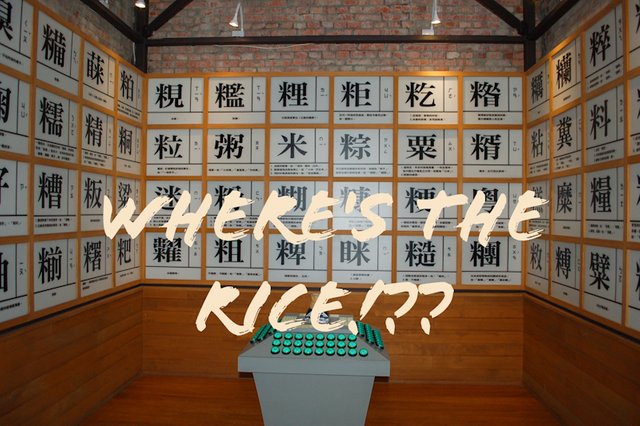
Rice is the main staple for many in Asia, and Er Jie Gu Cang is a museum that tells the history and story of rice in Taiwan. The museum is at Er Jie, a little town that frankly speaking most wouldn't bat an eyelid if you passed through.
到宜蘭鐵道遊的朋友,我會很推薦到二結穀倉稻農文化館一遊。 二結離開宜蘭市大概五公里,坐火車往南走只有一個站。
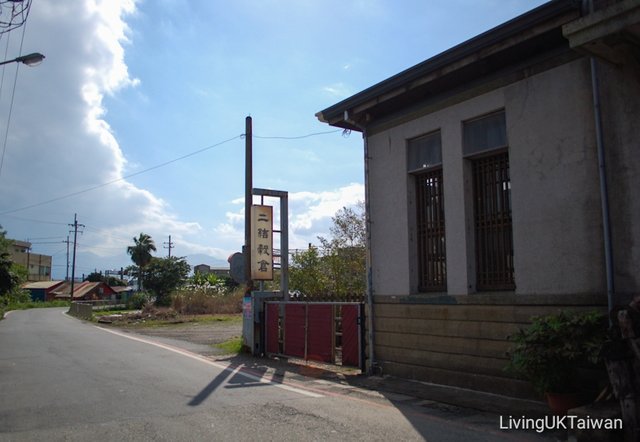
Er Jie itself is one train stop or five kilometers away from Yilan City, one of the biggest city on the east coast of Taiwan. The town is so small that there really isn't much there. That is apart from this old granary which has been turned into an interesting museum.
文化館在二結火車站路軌的另一邊,走路只需五分鐘。 穀倉建於日治時期現在是縣定古蹟, 其本身的建築和文化展覽都很值得看。
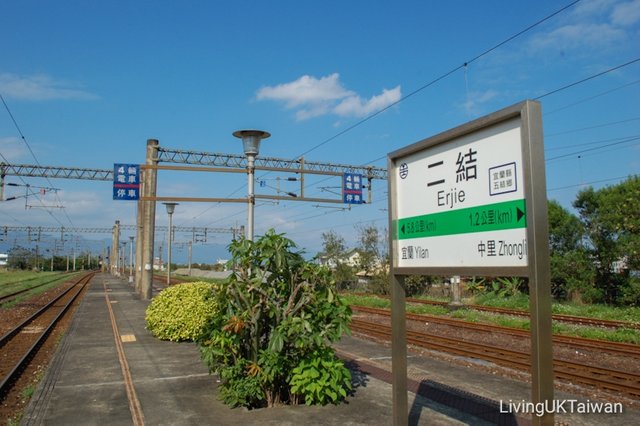
HISTORY OF THE GRANARY
The Er Jie agriculture association was first established during the Japanese colony days in 1928. Its main purpose was to collect the harvest from local farmers and mill the rice there. The rice was then transported to Taipei, or exported to Japan and nearby south eastern Asian countries. The granary was extended with a bigger three storey high structure in 1935.
By the early eighties, agriculture was in gradual decline in Taiwan. The building started to fall into derelict due to frequent typhoons and lack of general maintenance, and the granary was eventually closed in 1983.
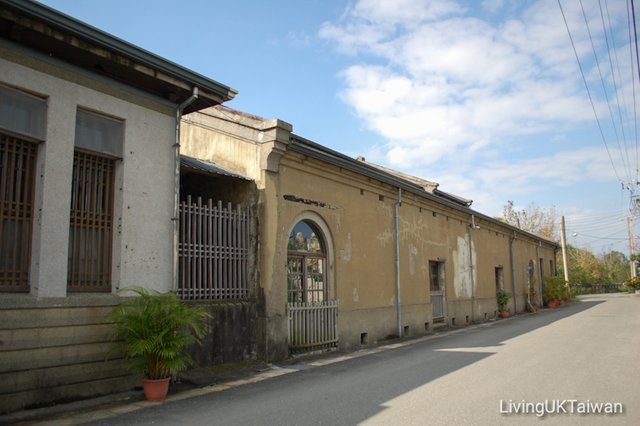
In 1998 the local government designated this as a protected building and made plans to restore the granary. The ErJie Gu Cang was opened to the public in 2011 as a musuem for people to learn about the history and story of rice. Two wooden figures stands proudly at the main entrance, heads bowing slightly to welcome guests.
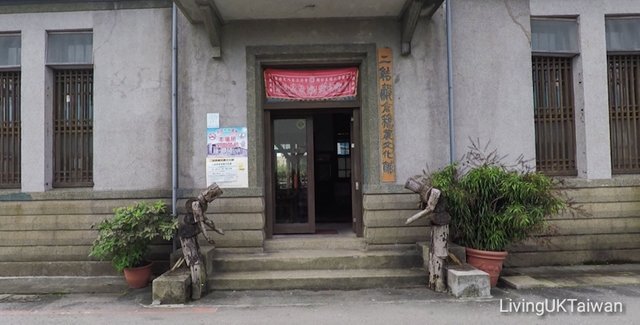
Learning about the history and story of rice
The museum is broadly split into four exhibition area, the eastern, western and center corridor, plus the upstairs section. Then there is the front seating area by the entrance and the courtyard out at the back. I'm going to show you the front seating area and the upstairs section in a video below, and the other sections in this post.
文化館分為東側廊區,西側廊區,穀倉倉槽區和二樓展覽區。 另外還有大門內的喝茶區和戶外休息區。 視頻中我會跟大家分享二樓展覽區,和大門內的喝茶區。其餘展覽區會在帖子裡一一日為大家介紹。
Eastern corridor
The eastern corridor tells the story about restoring the granary and reverting it back to 1935 when the main part of the structure was built. Walking through the east corridor entrance is a bit like walking through a mini time tunnel. Each of the tall hexagon door frames takes you a bit closer back to time. There is a mock up of a small old office inside, and heavy duty scale used to weigh the sacks of rice. Beyond that, sadly there wasn't much of interest. Let's move on.
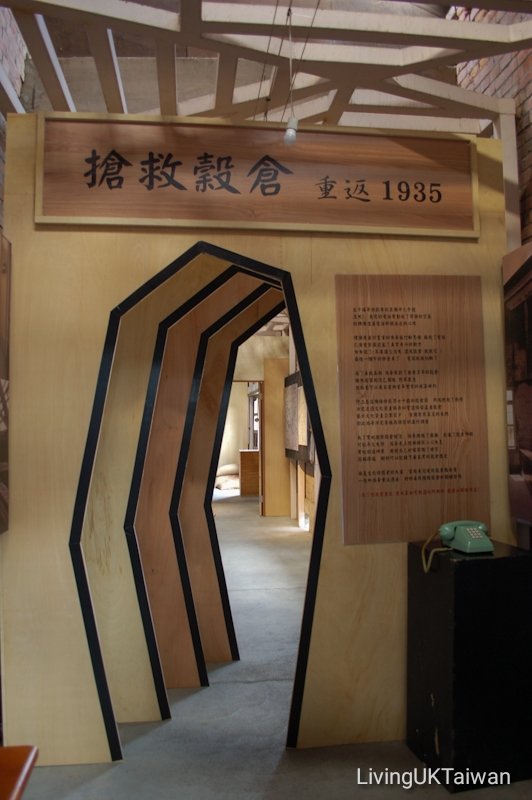
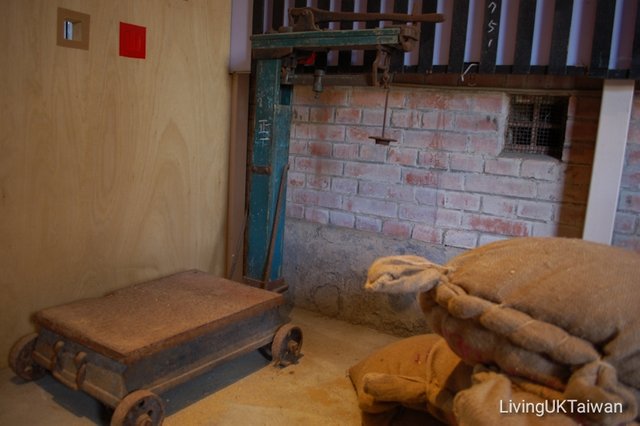
Western Corridor
The exhibition at the western corridor is about the local culture and surrounding area, and extends beyond the history and story of rice. The red entrance is one typically found at temples. The name of the temple is at the top of the door and the writings on the side are traditional couplets
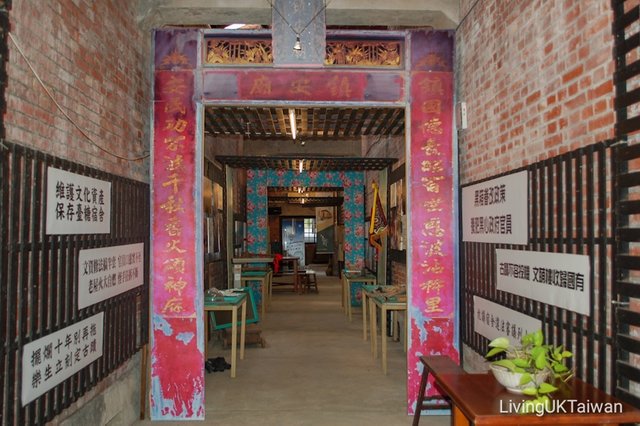
There are more farming relics on display at the end of the corridor. Massive urns and bamboo baskets to make rice by-products, wheelbarrows to transport the rice, and another scale. Remember I mentioned earlier on they used to mill the harvest here? This was done by a massive wooden milling machine that is as tall as the entire building. The wood you see in this photo is the base of the milling machine. I'll come back to this in a minute.
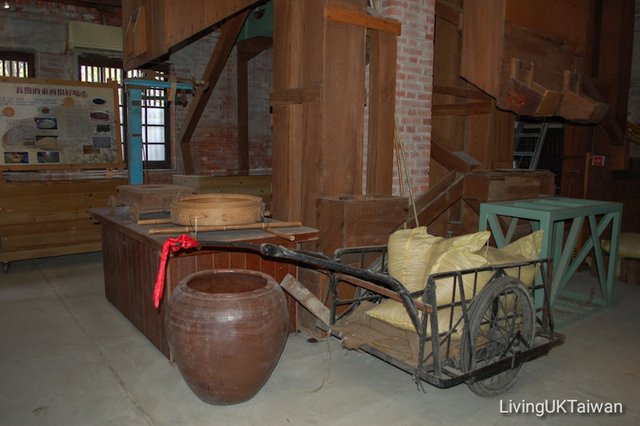
Center corridor
Personally I think this is the most interesting part of the museum. There are many small store rooms in the granary and each one of them have been converted into exhibition areas displaying different aspects of the history and story of rice.
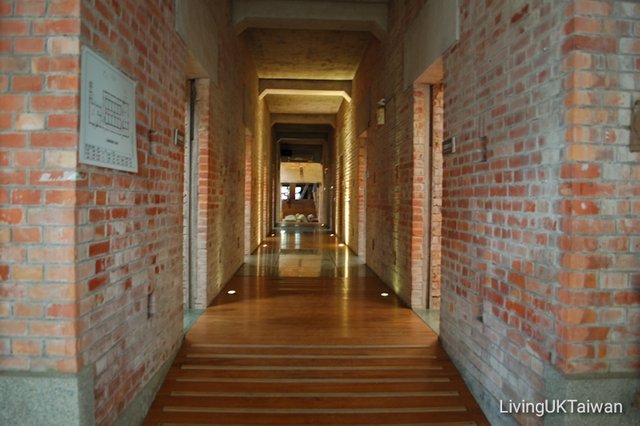
Do you notice an outlet near the ground level outside each room? These are air vents to maintain ventilation in the store rooms so the rice is kept nice and dry.
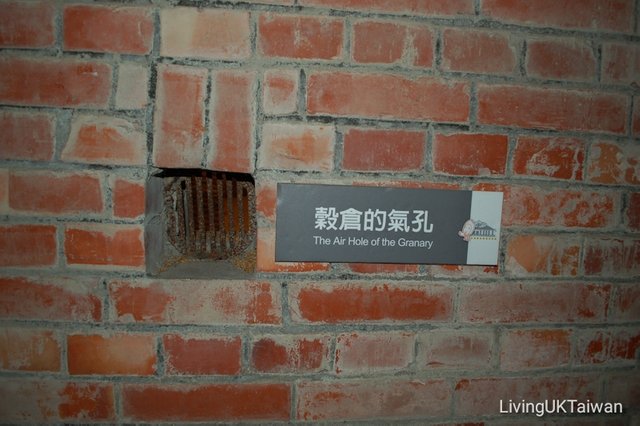
Each of the store rooms have a different theme where visitors can learn more about rice. For example, this room talks about the rice eating culture around the local area. Rice can be used to make many types of by-products and meals. Some are eaten all year round and others are typically eaten only around certain times of the year. Food is always a winner, and it was great to learn about the history and story of rice this way.

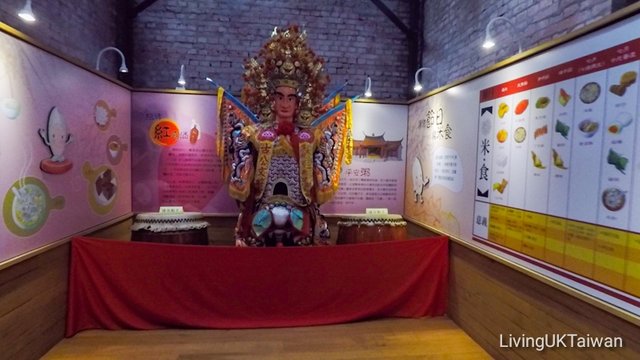
This room talks about the different variety of rice grown in Taiwan. Taiwan is not a major rice producing country, yet the quality of Taiwanese rice is very good. The variety we eat here was imported from Japan during the colonial days. I prefer the texture of Taiwanese rice over other varieties around the world as it has a very nice tender yet not mushy bite.
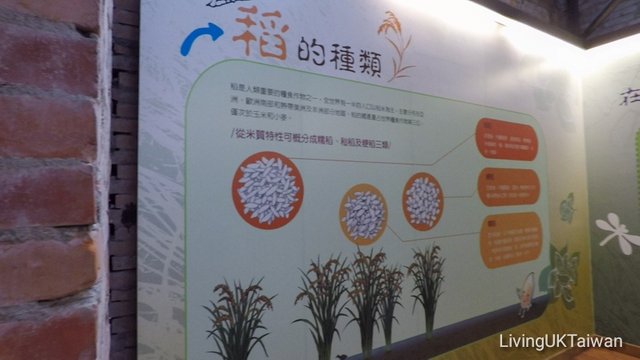
The Union Jack is often called the rice flag by the Chinese because the Chinese word rice 米 can be found on it. Can you spot the word on the Union Jack?
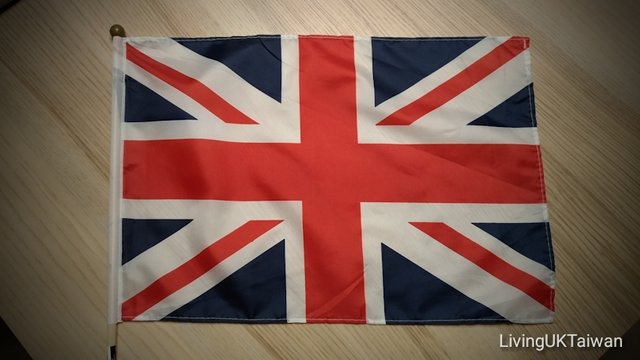
And now can you find it in the room below?
This has got to be my favourite room in the museum. It includes all the words with the word rice 米 in it. Most of the other words are food or rice related such as its next door neighbour on the left 粥 is rice porridge, and on the right 粽 is rice dumpling. Others aren't necessaryily related though, such as diagonally left of 粥 rice porridge is 迷 meaning lost. And then diagonally right of lost 迷 is 粗, that means coarse or rough. It was very interesting going through all the words as I didn't know quite a lot of them!
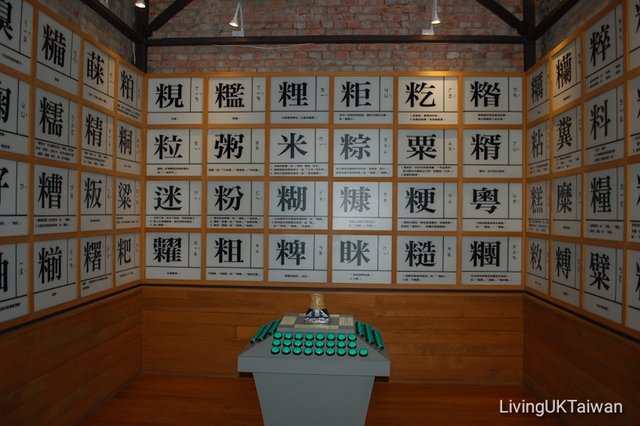
Upper Section
The curation of the museum is very cleverly done. This is the upstairs section and is above the many little store rooms along the centere corridor. In my video below I will show you how they have used this space to display a lot of agriculture artifacts. I'll also show you the three story high wooden milling machine that I mentioned earlier on.
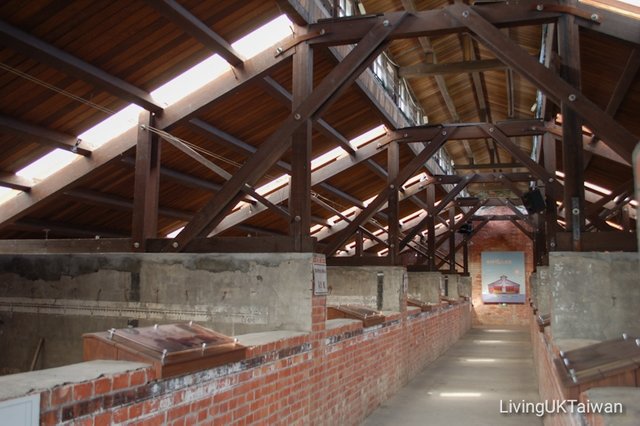
Outside courtyard
Finally, lets take a quick walk outside. As we come through the front area of the museum (it's in the video if you haven't watched it yet) we walk into a courtyard. This a great place to sit and relax after you have visited the museum. And let me show you what's in front of the seating area.
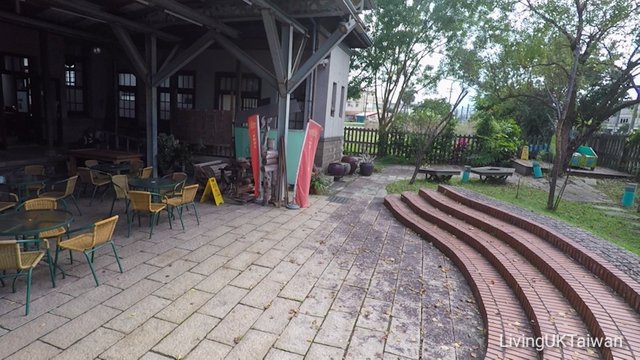
Two more wooden figures are sitting under the gazebo and one of them is waving at the visitors. The railway track is just behind them and the low building behind them is the railway station. The railway station plays quite a integral part of the museum due to its proximity and even the museum's entry tickets are designed exactly like a railway ticket.
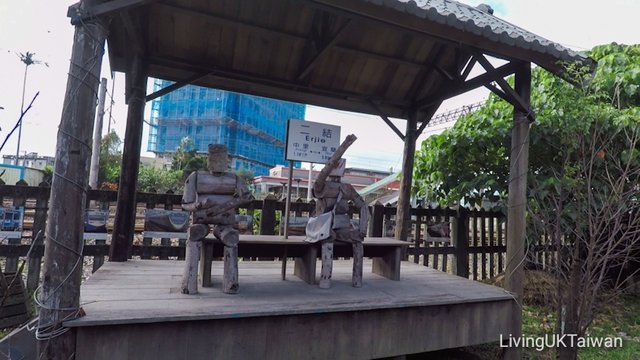

If you're interested in my other posts during my recent trip to Yilan on the east coast of Taiwan you can check out this post.
Posted from my blog with SteemPress : http://livinguktaiwan.com/the-history-and-story-of-rice/
Check out all my travel posts here on Steemit Worldmap, and also my latest project @LadiesOfAsia where we share fun and cultural diversity across Asia Pacific.

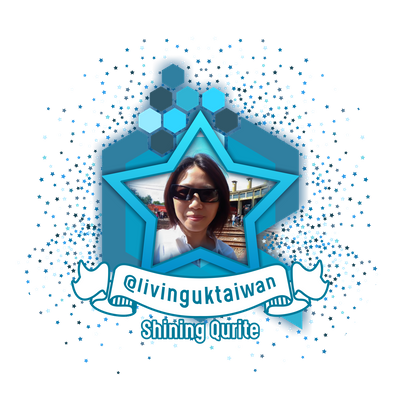 |
|---|
This is a very interesting place that I'd like to visit too as rice is the main staple at my home as well :) My husband is originally from Indonesia even though he was born in the Netherlands but his parents cook only Asian meals.
So funny to learn about the rice flag :) and that room with all those symbols is amazing! Do you understand all of them?
And I guess that Taiwan is not the biggest producer of rice because of its size, isn't it?
Thank you for sharing Pauline! I like your story and your photos are very nice too!
Thanks as always Martina. I think Taiwan isn't a major rice producer as it isn't as big as other countries such as India or Thailand, and labour is a bit more expensive. Also the east side where most of the agriculture is often have typhoons and that sometimes can wipe out the whole crop. I believe we are quite self suffucient though, which is great.
I imagine there must be quite a large Indonesian community in Netherlands due to its colonial days?
I wonder if I'll ever be able to distinguish different categories of rice - I never think about it, since I've not been raised on rice I see it as just a 'carrier' of the food that I eat with the rice, but have never had an opinion on the rice itself :-) I actually would love to get to know more about it. This museum seems like an well-spent visit :-)
I think the most common types of rice for westerners are probably long grain such as basmati rice and short grain used to make paella, but rice variety to westerners is a bit like potatoes to Asians. I don't think any Asian can tell the difference between a maris piper vs a king edward or new potato - or is that just an English thing? ^_^
Hahaha - I know even less about Potatoes apparently :') I know you can cook them (yuck), mash them (more yuck) or bake and fry them (yummee, crispy! :')) and steam them (yummee, with a bit of garlic sauce please!).
Never been a fan of potatoes although my parents made a very very nice garlic mash last time I visited, wish they had raised me on that, but they learned how to 'really' cook only later in life :-)
mmm... never tried garlic mash before, though that sounds interesting. Is that with mashed garlic or garlic bits?
Yes, you can mash and bake the garlic and later incorporate it in the potato mash. I didn't ask for the recipe, but it was freakishly good.
Wow its an amazing museum
Very nice dear friend such agrest post
Thanks for sharing
Thanks dear friend
Posted using Partiko Android
Thanks I'm so impressed you read the whole post one minute after I posted it as its quite long. Which part did you find most amazing?
I don't think you will ever get an answer :D
😉
Congratulations, Your Post Has Been Added To The Steemit Worldmap!
Author link: http://steemitworldmap.com?author=livinguktaiwan
Post link: http://steemitworldmap.com?post=thehistoryandstoryofrice-3ad2nsax7j
Want to have your post on the map too?
Hi @livinguktaiwan!
Your post was upvoted by @steem-ua, new Steem dApp, using UserAuthority for algorithmic post curation!
Your UA account score is currently 4.864 which ranks you at #1268 across all Steem accounts.
Your rank has dropped 3 places in the last three days (old rank 1265).
In our last Algorithmic Curation Round, consisting of 247 contributions, your post is ranked at #52.
Evaluation of your UA score:
Feel free to join our @steem-ua Discord server
Congratulations! Your high-quality travel content was selected by @travelfeed curator @for91days and earned you a partial upvote. We love your hard work and hope to encourage you to continue to publish strong travel-related content.
Thank you for being part of the TravelFeed community!
Learn more about our travel project on Steemit by clicking on the banner above and join our community on Discord.
Thanks @travelfeed!!!
Hi, @livinguktaiwan!
You just got a 0.9% upvote from SteemPlus!
To get higher upvotes, earn more SteemPlus Points (SPP). On your Steemit wallet, check your SPP balance and click on "How to earn SPP?" to find out all the ways to earn.
If you're not using SteemPlus yet, please check our last posts in here to see the many ways in which SteemPlus can improve your Steem experience on Steemit and Busy.
Hiya, just swinging by to let you know that this post made the Honorable Mentions list in today's Travel Digest. If you enjoy steemit worldmap and the manual curation effort we're going through each day, please consider supporting what we do!